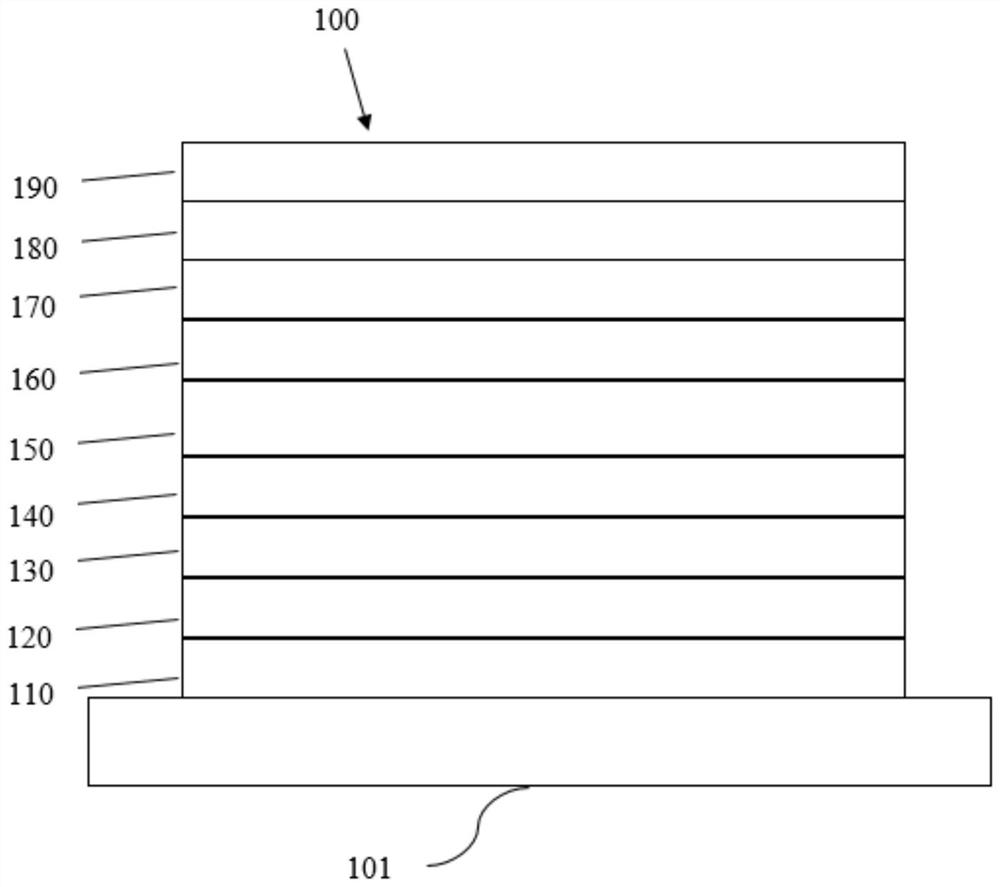Organic electroluminescent materials and devices
An electron-drawing-based, non-substituting technology, applied in the field of organic electroluminescent materials and devices, can solve problems affecting deposition control, production performance, reproducibility, device thermal stability, doping use, low evaporation temperature, etc., and achieve excellent applications Foreground, good potential effect
- Summary
- Abstract
- Description
- Claims
- Application Information
AI Technical Summary
Problems solved by technology
Method used
Image
Examples
Embodiment Construction
[0038] OLEDs can be fabricated on various substrates such as glass, plastic and metal. figure 1 The organic light emitting device 100 is shown schematically and non-limitatively. The drawings are not necessarily drawn to scale, and some layer structures in the drawings can also be omitted as needed. Device 100 may include substrate 101 , anode 110 , hole injection layer 120 , hole transport layer 130 , electron blocking layer 140 , light emitting layer 150 , hole blocking layer 160 , electron transport layer 170 , electron injection layer 180 and cathode 190 . Device 100 may be fabricated by sequentially depositing the described layers. The properties and functions of the various layers and exemplary materials are described in more detail in US Patent No. 7,279,704 B2, columns 6-10, the entire contents of which are incorporated herein by reference.
[0039] Each of these layers has more instances. For example, flexible and transparent substrate-anode combinations are disclo...
PUM
 Login to View More
Login to View More Abstract
Description
Claims
Application Information
 Login to View More
Login to View More - R&D Engineer
- R&D Manager
- IP Professional
- Industry Leading Data Capabilities
- Powerful AI technology
- Patent DNA Extraction
Browse by: Latest US Patents, China's latest patents, Technical Efficacy Thesaurus, Application Domain, Technology Topic, Popular Technical Reports.
© 2024 PatSnap. All rights reserved.Legal|Privacy policy|Modern Slavery Act Transparency Statement|Sitemap|About US| Contact US: help@patsnap.com










